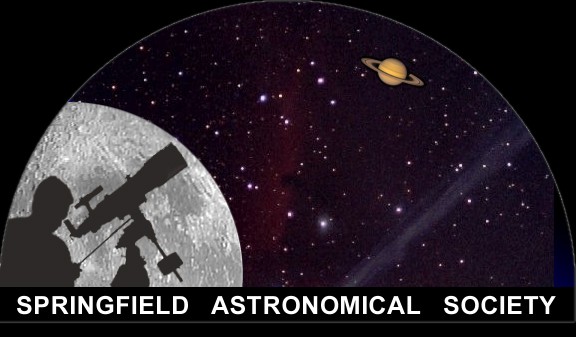7/18/2025
| Member Login: |
Collection of Astrophotos
By Club Members
<< First | << Previous 10 Pictures | Next 10 Pictures >> | Last >>
There are currently 278 astrophotos in the gallery..
Richard Harris https://moonbeamdevelopment.com 8/22/2017 11:07:09 AM My ecplise event as taken in Strafford, Mo. Equipment used: LXD75 mount, Orion 102mm APO, Canon 6D, Baader solar filter (full apature), 1/2000 shutter, ISO 200 Color adjusted slighty in the histograhm record only, and warming applied with PS CC | Patrick Holland 8/21/2017 9:47:34 PM Another eclipse image from today, had camera issues so I cleaned up this image as best I could.... | Patrick Holland 8/21/2017 9:17:55 PM From the eclipse today. Lunt 60mm HA scope, iOptron ZEC25 Mount, Point Grey Grasshopper 3 Camera |
Jim Aldrich 3/1/2015 4:42:50 PM Here is my attempt to image NGC 2683 and some of the surrounding galaxies. Most of these distant galaxies are magnitude 18 or fainter. Located in the constellation Lynx, it is similar to our own galaxy as seen nearly edge on. NGC 2683 is thought to be between 16-24 mly away. A much closer and more detailed shot of this galaxy can be found on the March cover of Sky & Telescope magazine. | Henry Stratmann 1/29/2015 5:41:33 PM This image of the region just south of Alnitak, the most eastern star in Orion's Belt, shows three different kinds of nebulae. The Horsehead Nebula (Barnard 33) in the center is a dark nebula. NGC 2023 is the blue reflection nebula just to the left of the Horsehead's base. The Flame Nebula (NGC 2024) at the left of the image is an emission nebula. This is an HaRGB image taken at a focal length of 620 mm. | Henry Stratmann 1/20/2015 9:59:06 PM Comet Lovejoy, C/2014 Q2, is currently (mid-January 2015) visible with the naked eye under dark skies. This image was obtained under the considerably less than dark skies of southern Springfield. Total exposure time was 9 minutes, consisting of 1 minute sub-exposures (3 each through R, G, and B filters). Images were acquired with a Celestron Rowe-Ackermann 11"/f2.2 Schmidt astrograph. Field of view is 100' x 75'. |
Jim Aldrich 1/17/2015 3:26:44 PM NGC 1788 (aka The Foxface Nebula & LBN 916) is a reflection nebula located in Orion about 1,300 ly from Earth. It is the home of an active star forming region called Lynds 1616. Many hot young star inhabit the area. This LRGB image is a composite of about eight hours of exposures. | Jim Aldrich 12/31/2014 11:10:12 PM M1 (Crab Nebula) is a supernova remnant located in the constellation Taurus. The progenitor star exploded in the year 1054 as recorded by Chinese & Arab astronomers. Since the SNR is only 6500 ly away, it has been well studied for centuries. The original star remains as a spinning neutron star (pulsar) only 30 km in diameter. Narrow band filters reveal ionized sulfur (red), hydrogen (green), & oxygen (blue) mapped as per the Hubble palette. About 12 hours of 20 min exposures were combined to complete the image. | Jim Aldrich 12/13/2014 11:23:12 PM Here is an image of the brighter parts of IC63 (Right) & IC59 (Left). Both objects are part of the same gas cloud and are located in the constellation Cassiopeia, about 620ly from us. The nearby bright star Gamma Cas (not shown) is illuminating the nebulae. The picture is a composite of images taken through Ha, Luminous, Red, Green, & Blue filters. |
Jim Aldrich 11/18/2014 1:37:12 PM NGC 660 is located in the constellation Pisces about 20 mly away. It's described as a polar ring galaxy because it has a ring of debris orbiting the galactic disk. A possible collision with a smaller galaxy is the likely explanation for it's appearance. Around 40, ten minute exposures through LRGB filters were combined to create this image. |
<< First | << Previous 10 Pictures | Next 10 Pictures >> | Last >>
